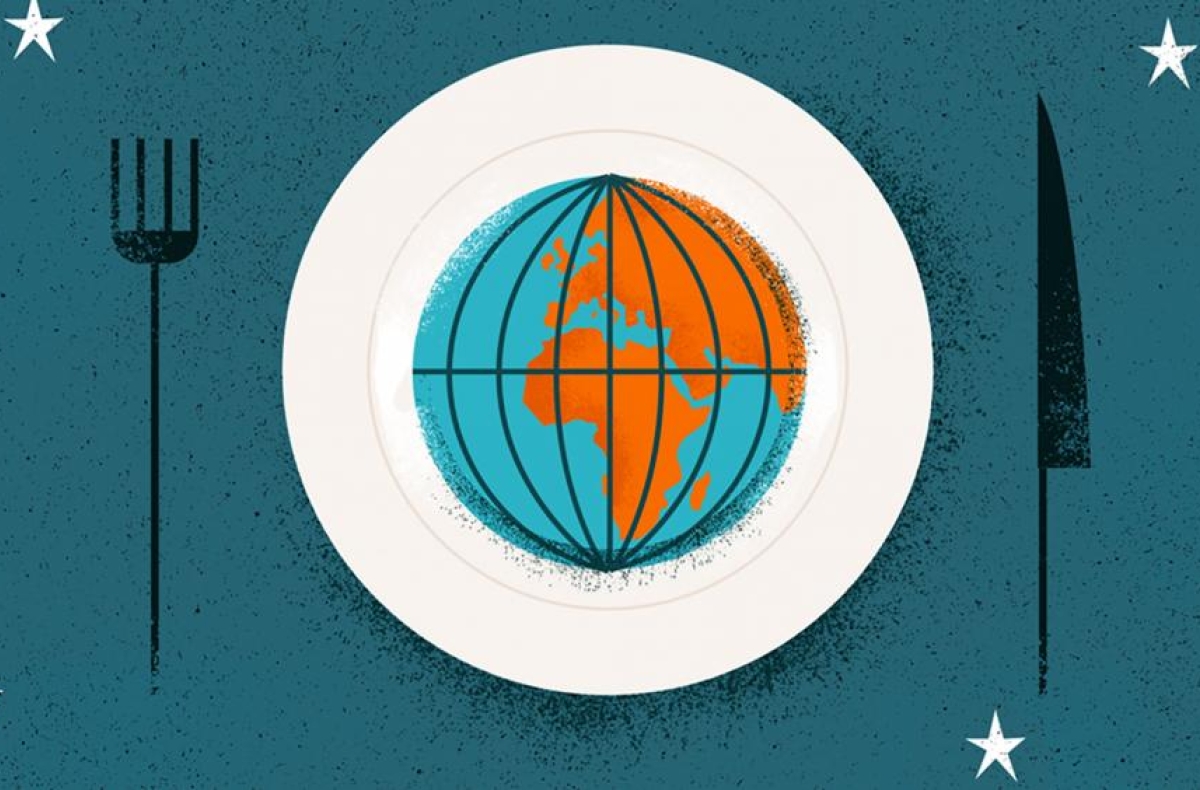The Woods Institute is now part of the Stanford Doerr School of Sustainability
Changing How — and What — the World Eats

The availability and means of accessing food impacts the evolution of our cultures.
Illustration by Kevin Craft
May 15, 2018
By:
As the global population approaches 10 billion and the effects of climate change continue to alter familiar agricultural patterns, the world is already witnessing a transformation in how and where it gets its food.
Even diets are changing as people move away from traditional animal proteins, like beef and pork, to fish and vegetable sources.
Stanford’s Roz Naylor, the director of the Center on Food Security and the Environment, says those shifts could lead to a world that looks a lot different than today. For instance, Naylor says that aquaculture, better known as fish farming, is now the fastest growing sector of the global food industry. And, thanks to changes in the industry, rapidly growing Africa stands to become a hotspot for agricultural entrepreneurs.
On an episode of “The Future of Everything” radio show, Naylor discusses these and the many other ways in which the business of feeding the world is changing right before our eyes. Listen to the interview.
Contact Information
Christine H. Black
Associate Director, Communications
650.725.8240
ChristineBlack@stanford.edu
Devon Ryan
Communications Manager
650.497.0444
devonr@stanford.edu
Rob Jordan
Editor / Senior Writer
650.721.1881
rjordan@stanford.edu


